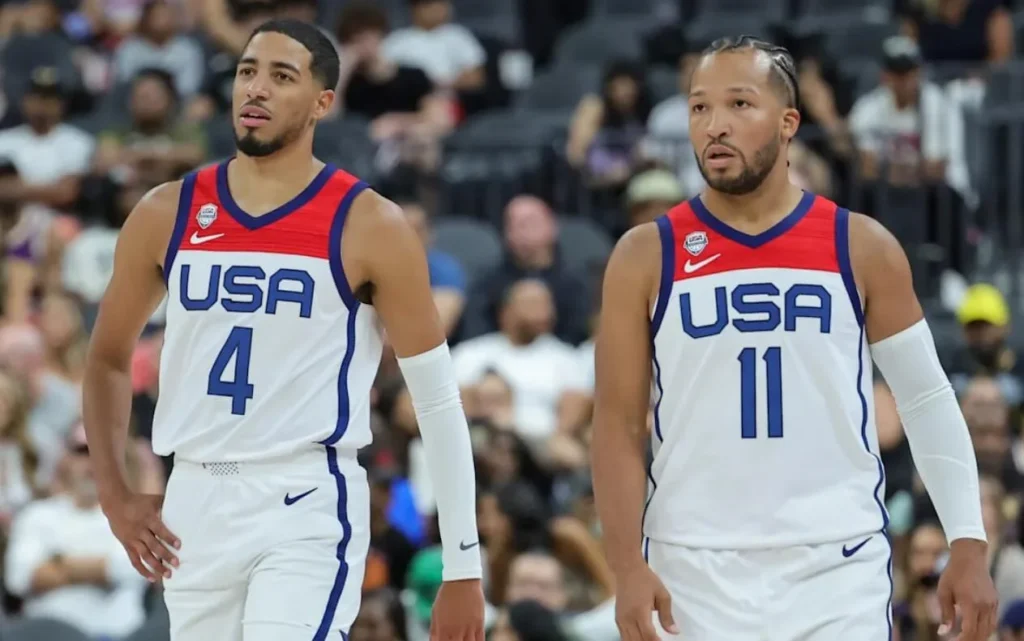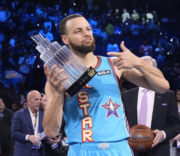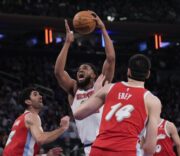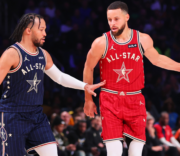
Team USA is no stranger to the limelight, having played countless games in the NBA arenas. However, this summer’s pre-World Cup tour presented a unique challenge: understanding and adapting to the distinctive set of rules laid down by FIBA. While the essence of basketball remains intact, the nuances brought about by FIBA’s regulations are making Team USA rethink their strategy.
A Moment of Realization
During the USA Basketball team’s initial exhibition game, an incident occurred that highlighted the differences between NBA and FIBA playstyles. With a mere 1.4 seconds remaining in the first half, Coach Steve Kerr, the mastermind behind Golden State Warriors, anticipated a rapid inbounds pass. An NBA game under the same circumstances wouldn’t have witnessed Kerr calling a timeout. But the FIBA rulebook had something else in store.
“All this stuff comes into play now,” said Kerr. “That’s what these exhibition games are for — for players and coaches.”
Basketball’s Constants and Variables
While the heart of basketball remains the same across the NBA and FIBA – with standard 10-foot rims, 5-on-5 team structures, and universally acknowledged fouls – there are myriad differences that set them apart.
Differences at a Glance
| Aspect | NBA | FIBA |
| Game Duration | Four 12-minute quarters | Four 10-minute quarters |
| 3-Point Line Distance | Varies; generally longer | Shorter, especially in corners |
| Foul Limit for Players | 6 | 5 |
| Defensive 3-Second Rule | Applicable | Not applicable |
| Goaltending Rule | Strict | More lenient post-rim touch |
Redefining Playstyle and Strategy
While the differences may seem superficial to some, for the players, especially those transitioning from NBA to FIBA, the changes are palpable.
U.S. forward Bobby Portis of the Milwaukee Bucks remarks on the contrasting nature of the games:
“The games are two totally different games.”
FIBA’s more compact game structure, coupled with its distinctive 3-point line, makes players rethink their strategies on the court. In addition to these changes, the defensive playstyle also sees notable differences. For instance, players can’t use timeouts to navigate away from jump balls or contested ball situations. Moreover, once the ball makes contact with the rim, both teams can attempt to claim it, devoid of goaltending concerns.
For U.S. forward Paolo Banchero, these rule changes bring about a significant shift in game dynamics.
Jaren Jackson Jr., an exemplary defensive player from the Memphis Grizzlies, finds FIBA’s rule changes liberating, especially for defense.
Embracing the Differences
Despite the challenges posed by FIBA’s distinctive regulations, Team USA is on a promising trajectory. Their preparations included specialized training camps in Las Vegas, where FIBA referees provided guidance. The results have been positive, with the team boasting a 3-0 winning streak in exhibitions, even triumphing over Spain, a top-ranked global team.
U.S. point guard Jalen Brunson, representing the New York Knicks, expressed his thoughts post-practice:
“The game is totally different. But it’s about how fast you can adjust. We don’t play by these rules year in and year out and the small things are different, but you just have to adjust a little bit. It’s still basketball.”

Embracing Change: The Road Ahead for Team USA
As the landscape of basketball continues to evolve, so too does the essence of the game. While the core principles remain the same, the rule changes signify a deeper connection to the global playing field and a nod to the sport’s diverse nature.
Key Takeaways from Team USA’s Experience:
- Adaptability is Crucial: As with any sport, the ability to adapt to new rules and strategies is vital. Team USA’s swift recalibration to FIBA’s regulations underscores the importance of flexibility in high-level competition.
- Learning Curve is Inevitable: Even for seasoned professionals, a new set of rules can present challenges. Team USA’s journey highlights the need for continuous learning and growth, regardless of one’s expertise.
- Global Unity Through Sport: The variations in rules across different basketball governing bodies mirror the rich tapestry of cultures and approaches in the sport. By understanding and respecting these nuances, basketball can truly be a tool for international unity.
“It’s still basketball. The game is totally different. But it’s about how fast you can adjust. We don’t play by these rules year in and year out and the small things are different, but you just have to adjust a little bit.” – Jalen Brunson
Looking Forward:
The preparations and adaptations Team USA has undergone in the lead-up to the World Cup are more than just about strategy. They embody the spirit of perseverance, collaboration, and respect for the game’s global dimensions.
As fans and supporters, it’s an exciting time to witness the evolution of basketball. The variations in rules, while initially challenging, offer a fresh perspective and enrich the viewing experience. As Team USA has demonstrated, with commitment and adaptability, these challenges can be transformed into opportunities for growth and triumph.
In conclusion, as Team USA gears up for the World Cup under the new set of FIBA rules, their journey serves as a testament to the sport’s dynamic nature and the unwavering spirit of athletes worldwide.
































